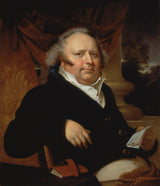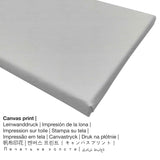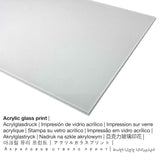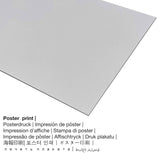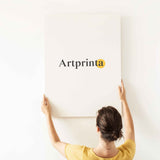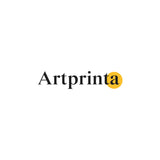Rembrandt Peale, 1817 - Eserese Jacob Gerard Koch - ọmarịcha nka
Ụtụ gụnyere. Mbupu gbakọrọ na ndenye ọpụpụ.
Banyere akụkọ
In 1817 the male American painter Rembrandt Peale kere ihe a 19th narị afọ masterpiece. The version of the work of art was painted with the size: 34 1/16 × 29 na (86,52 × 73,66 cm) ma jiri usoro ihe arụpụtara ya mmanụ na kwaaji. Enwere ike ịlele ya na nchịkọta nka dijitalụ nke Ebe ngosi nka nke Los Angeles County. Site n'ikike nke - Ụlọ ihe ngosi nka nke Los Angeles County (www.lacma.org) (licensed: public domain).The creditline of the artpiece is the following: . Besides, the alignment is in Eserese usoro na nwere ihe oyiyi ruru nke 1: 1.2, which means that the length is 20% shorter than the width. Rembrandt Peale was a curator, painter of American nationality, whose artistic style can primarily be attributed to Neoclassicism. The North American artist was born in the year 1778 in Bucks county, Pennsylvania, United States, county and deceased at the age of 82 in 1860 in Philadelphia, Philadelphia county, Pennsylvania, United States.
Additional information as provided by Los Angeles County Museum of Art (© - Ụlọ ihe ngosi nka nke Los Angeles County - www.lacma.org)
The letter that the male sitter has apparently just pulled from his correspondence folder is addressed to [Ja]cob Gerard Koch (1761-1830), a prosperous merchant and prominent citizen of Philadelphia. Born in Holland, Koch emigrated to America before 1778. His business as an importer and merchant of "German" linens made him wealthy enough to purchase a country estate, Fountain Green, at the Falls of the Schuylkill in about 1801 and leave an immense estate in 1830 of more than a million dollars. A conspicuous patriot during the War of 1812, he contributed five thousand dollars toward the building of a frigate. Contemporaries remarked upon his exceptional corpulence; he weighed more than three hundred pounds. The letter bears a postal hand stamp "SHIP" and a manuscript rate marking "6." Although the six-cent rate was in use for a long time (1794-1861), the earliest known use of the "SHIP" hand stamp was in 1817, which suggests to historian Frederick S. Dickson that the paintings should be dated between 1817 and 1820, when Koch retired from business and moved to Paris. At that time he was married to his second wife, Jane Griffith (born in Ireland about 1772), whom he had married in Philadelphia in 1801. She survived her husband and lived in Paris until 1848. In 1833 Mrs. Koch wrote to her brother-in-law Matthew Huizinga Messchert in Philadelphia to order a copy of the portraits from THOMAS SULLY, who referred to them in his journal as by "R. Peale," confirming the stylistic evidence that points to an attribution of the original portraits to Rembrandt Peale. Closely comparable with the Koch portrait, for instance, would be Rembrandt Peale’s portrait of General Samuel Smith from the period of about 1817-18, in Baltimore’s Peale Museum, and his portrait of Isaac McKim of the same period at the Maryland Historical Society. Peale frequently posed his male subjects with one arm over a chair back to create a pyramidal composition, as in the portrait of Koch. Together with a general simplification and geometrizing of form, this most stable of compositions contributes to the neoclassical order of the portrait, which, however, is balanced by the strong contrasts and turbulent sky painted in the romantic tradition. As was his custom, Peale carried out the wife’s portrait in an even more romantic manner, with flowing lines, softer modeling, and a less direct gaze. While the male and female types are dissimilar, the unified architectural space between the portraits leaves little doubt that they are a pair. This background is among the most elaborate and impressive that Rembrandt Peale painted. Together with the richness and high quality of the figure painting, it marks the pair as among the artist’s finest works.
Tebụl a haziri ahazi nke ọrụ nka
| Aha nka: | "Portrait of Jacob Gerard Koch" |
| Nhazi nka: | sere |
| Nhazi nka: | nkà nke oge a |
| Time: | 19th narị afọ |
| Afọ okike: | 1817 |
| Afọ nka: | ihe karịrị 200 afọ |
| Ọkara nke ihe osise izizi: | mmanụ na kwaaji |
| Nha izizi: | 34 1/16 × 29 na (86,52 × 73,66 cm) |
| Ụlọ ihe ngosi nka: | Ebe ngosi nka nke Los Angeles County |
| Ebe ebe ngosi nka: | Los Angeles, California, Njikota Obodo Amerika |
| Weebụsaịtị ihe ngosi nka: | Ebe ngosi nka nke Los Angeles County |
| Ụdị ikike nka: | ngalaba ọha |
| Site n'aka: | Ụlọ ihe ngosi nka nke Los Angeles County (www.lacma.org) |
Tebụl onye na-ese ihe
| Ihe nkiri: | Rembrandt Peale |
| Aha ndi ozo: | peale rembrandt, peale rembrand, Rembrandt Peale, Peale, Peale Rembrandt |
| okike nke onye nka: | nwoke |
| Obodo onye nka: | American |
| Ọrụ nke onye na-ese ihe: | onye ese, curator |
| Obodo onye nka: | United States |
| nhazi ọkwa: | omenkà nke oge a |
| Ụdị nke onye na-ese ihe: | Neoclassicism |
| Oge ndu: | 82 afọ |
| A mụrụ: | 1778 |
| Ebe omuma: | Bucks County, Pennsylvania, Njikota Obodo Amerika |
| Nwuru: | 1860 |
| Obodo ọnwụ: | Philadelphia, Philadelphia County, Pennsylvania, Njikota Obodo Amerika |
Họrọ ihe ị ga-achọ inwe
The product dropdown menu provides you with the possibility to select the size and material of your choice. The following sizes and materials are the options we offer you for individualization:
- Ihe odide acrylic glass: An print on acrylic glass, which is often named as a print on plexiglass, transforms the original artwork into great home décor. Above all, the acrylic fine art print offers a viable alternative to aluminium and canvas fine art replicas. The artwork is manufactured with the help of modern UV printing technology. The major benefit of an acrylic glass art print is that contrasts plus smaller color details will be more recognizeable with the help of the granular gradation in the picture.
- Ebipụta akwụkwọ mmado na ihe akwa akwa: The Artprinta poster is a printed sheet of canvas with a slightly roughened surface finish, that resembles the actual masterpiece. Please note, that depending on the size of the canvas poster print we add a white margin between 2-6cm round about the artwork in order to facilitate the framing.
- Mbipụta kanvas: The printed canvas, not to be mistaken with a canvas painting, is an image printed on a UV direct printer. It makes a particular impression of three-dimensionality. Canvas Prints have the advantage of being low in weight. That means, it is easy to hang the Canvas print without the help of extra wall-mounts. That is why, canvas prints are suitable for all kinds of walls.
- Aluminom dibond mbipụta (ọla): An Aluminium Dibond print is a print with an outstanding effect of depth, which creates a fashionable look throuch a non-reflective surface structure. For our Direct Print On Aluminum Dibond, we print the chosen artpiece onto the aluminium white-primed surface. The colors of the print are luminous and vivid, the fine details of the print appear clear and crisp.
Ngwaahịa a
| Nkewa edemede: | mmepụta nka |
| Mmeputakwa: | dijitalụ mmeputakwa |
| Usoro mmepụta: | Mbipụta UV ozugbo |
| Production: | Germany |
| Ụdị ngwaahịa: | na mmepụta ihe |
| Eji ngwaahịa emebere: | mgbidi mgbidi, mgbidi ndozi |
| Nhazi: | usoro eserese |
| Ụdị anya: | 1: 1.2 |
| Akụkụ onyonyo pụtara: | ogologo bụ 20% mkpụmkpụ karịa obosara |
| Ihe mmeputakwa dị: | akwụkwọ mmado (akwụkwọ kwaaji), mbipụta ọla (aluminium dibond), mbipụta kanvas, mbipụta iko acrylic (nwere ezigbo mkpuchi iko) |
| Mbipụta kanvas (akwa akwa na etiti ihe ndọtị) dị iche iche: | 50x60cm - 20x24", 100x120cm - 39x47" |
| Mpempe iko acrylic (nwere ezigbo mkpuchi iko) nha dị iche iche: | 50x60cm - 20x24", 100x120cm - 39x47" |
| Mbipụta akwụkwọ mmado (akwụkwọ kwaaji): | 50x60cm - 20x24", 100x120cm - 39x47" |
| Nhọrọ ebipụta aluminom: | 50x60cm - 20x24", 100x120cm - 39x47" |
| Nhazi mbipụta nka: | enweghị etiti |
Nkwupụta iwu: We try our utmost in order to depict our art products as accurate as possible and to showcase them visually. Please bear in mind that the tone of the print materials and the print result can differ somehwat from the representation on the monitor. Depending on the screen settings and the condition of the surface, color pigments might not be printed as exactly as the digital version on this website. Given that all art prints are processed and printed manually, there may as well be slight deviations in the motif's size and exact position.
© Nwebiisinka nke | Artprinta (www.artprinta.com)

